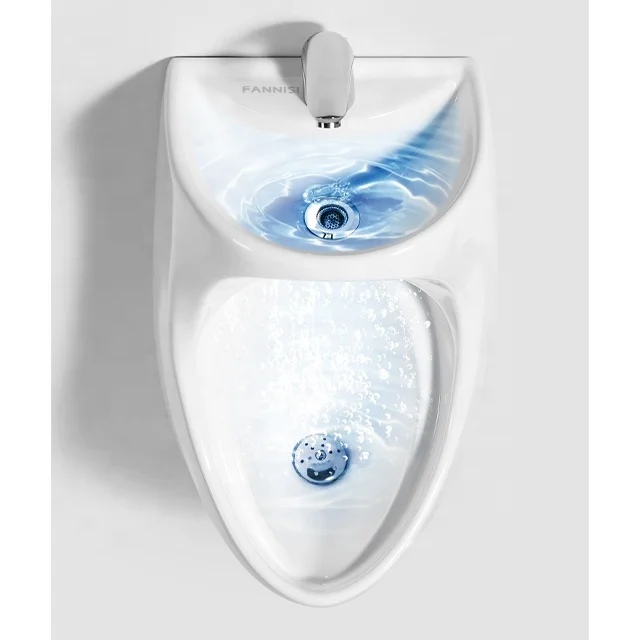Products
The field is required.
ABOUT
Dongguan Haizhilan Intelligent Technology Co., Ltd. is a factory specializing in the production of smart toilets, stainless steel toilets, ceramic toilets and other bathroom accessories. It has a modern office environment and first-class production facilities. It has served more than 50 companies across the country for 12 years and has received unanimous praise. In order to better serve foreign customers, the Foreign Trade Department was established in 2024, and Haizhilan Intelligent Technology will undertake foreign trade business. We always adhere to the core values of "innovation, integrity, professionalism, and excellence" and are committed to providing customers with high-quality products and services.
From Clay to Comfort The Fascinating Step by Step Process of Firing a Ceramic Toilet in a Kiln
2025-08-13
We all use a ceramic toilet several times a day, but ever wonder how this starts from simple lump of clay which on further shaping and firing became durable and sleek bathroom product that we have come to take for granted? The process that takes raw material to finished product is part science, but mostly art — and requires the exacting skill of creating one-of-a-kind pieces at extremely high temperatures. From Clay to Comfort: The Fascinating Step-by-Step Process of Firing a Ceramic Toilet in a Kiln –discusses the detailed process and craftsmanship that goes into creating an essential fixture that most people use every day in modern life. If you find yourself as interested in the firing process as an amateur homeowner or wanting-to-be ceramicist would, then this piece must have made you appreciate the everyday toilet even more.
Choosing the Right Clay: The Building Blocks
The Making of a Ceramic Toilet – 1 The process starts with the right choice of clay. Of course, not all clays will work; we should be looking for the primary three criteria of being non-perishable, malleable and able to handle high temperatures. Stoneware is typically made from a mixture of ball clay, kaolin, and feldspar which provides high strength and plasticity.
After selecting the clay, it must be cleaned to eliminate disturbances such as stones or plant content. This makes a smooth and uniform texture. This slurry is diluted with water and further processed until the clay is completely freed from impurities and has a moldable consistency.
Forming the toilet—- From die to accuracy
Now that the clay is mixed, it creates time for the formation of a toilet. Plaster molds are typically used to form the complex curves and cavities of the toilet. Slip, as the liquid clay is called, is poured into these molds and a plaster absorbs moisture causes the slip to harden.
When the clay has originated for enough time, at that point, the molds are deprived of and the can is checked cautiously for any imperfections. Certain sections may be hand-finished by skilled craftsmen among others ensuring that everything fits perfectly and is finished to your standards. Even at this stage, the toilet is very fragile and is called greenware.
Drying Prep: Pre-Kiln
The greenware must be completely dry before it is fired. One important step is that the toilet must be completely filled with clay as any water left in there will make the toilet break or even explode when fired It can take days to fully dry in a very controlled environment to ensure that it is perfectly straight.
It is to be expected that during this stage, the toilet can diminish by up to 10% as the water evaporates from it. This process is followed by its drying, with the piece being watched closely to dry evenly. Then the toilet was dried completely before its first firing, which is called the bisque firing.
Bisque Firing: Curing the body
Bisque firing is the first of two kiln firings, it will harden the clay forever. The toilet is then fired in a kiln, which means it is baked at a temperature of 1,800°F – 2,200°F (982°C–1,204°C). This prevents the clay from absorbing moisture and becoming porous so it is more durable, and the fired piece is called bisqueware.
The bisqueware is then checked for cracks or flaws. If the toilet passes review, it is moved on to be glazed with a liquid glass coating that provides the porcelain-toilet the glossy finish we all know and love (by virtue of its waterproof quality).
Glaze firing- adding some gloss and toughness
The final firing is the glaze firing and this is when the toilet takes on its glossy appearance. The bisqueware is then fired at a high temperature in the kiln, 2,300°F (1,260°C) or even higher for glazing. This will melt the glaze, creating a flat surface so rainwater etc. could not get into the holes and cracks in the pottery shell.
The glazed toilet is then further cooled before undergoing a final visual inspection for an even and void-free glaze. If all is well, it's bandaged up and sent on its way to where life began for the boot — clay to comfort.
Choosing the Right Clay: The Building Blocks
The Making of a Ceramic Toilet – 1 The process starts with the right choice of clay. Of course, not all clays will work; we should be looking for the primary three criteria of being non-perishable, malleable and able to handle high temperatures. Stoneware is typically made from a mixture of ball clay, kaolin, and feldspar which provides high strength and plasticity.
After selecting the clay, it must be cleaned to eliminate disturbances such as stones or plant content. This makes a smooth and uniform texture. This slurry is diluted with water and further processed until the clay is completely freed from impurities and has a moldable consistency.
Forming the toilet—- From die to accuracy
Now that the clay is mixed, it creates time for the formation of a toilet. Plaster molds are typically used to form the complex curves and cavities of the toilet. Slip, as the liquid clay is called, is poured into these molds and a plaster absorbs moisture causes the slip to harden.
When the clay has originated for enough time, at that point, the molds are deprived of and the can is checked cautiously for any imperfections. Certain sections may be hand-finished by skilled craftsmen among others ensuring that everything fits perfectly and is finished to your standards. Even at this stage, the toilet is very fragile and is called greenware.
Drying Prep: Pre-Kiln
The greenware must be completely dry before it is fired. One important step is that the toilet must be completely filled with clay as any water left in there will make the toilet break or even explode when fired It can take days to fully dry in a very controlled environment to ensure that it is perfectly straight.
It is to be expected that during this stage, the toilet can diminish by up to 10% as the water evaporates from it. This process is followed by its drying, with the piece being watched closely to dry evenly. Then the toilet was dried completely before its first firing, which is called the bisque firing.
Bisque Firing: Curing the body
Bisque firing is the first of two kiln firings, it will harden the clay forever. The toilet is then fired in a kiln, which means it is baked at a temperature of 1,800°F – 2,200°F (982°C–1,204°C). This prevents the clay from absorbing moisture and becoming porous so it is more durable, and the fired piece is called bisqueware.
The bisqueware is then checked for cracks or flaws. If the toilet passes review, it is moved on to be glazed with a liquid glass coating that provides the porcelain-toilet the glossy finish we all know and love (by virtue of its waterproof quality).
Glaze firing- adding some gloss and toughness
The final firing is the glaze firing and this is when the toilet takes on its glossy appearance. The bisqueware is then fired at a high temperature in the kiln, 2,300°F (1,260°C) or even higher for glazing. This will melt the glaze, creating a flat surface so rainwater etc. could not get into the holes and cracks in the pottery shell.
The glazed toilet is then further cooled before undergoing a final visual inspection for an even and void-free glaze. If all is well, it's bandaged up and sent on its way to where life began for the boot — clay to comfort.
SUBSCRIBE
INQUIRY


